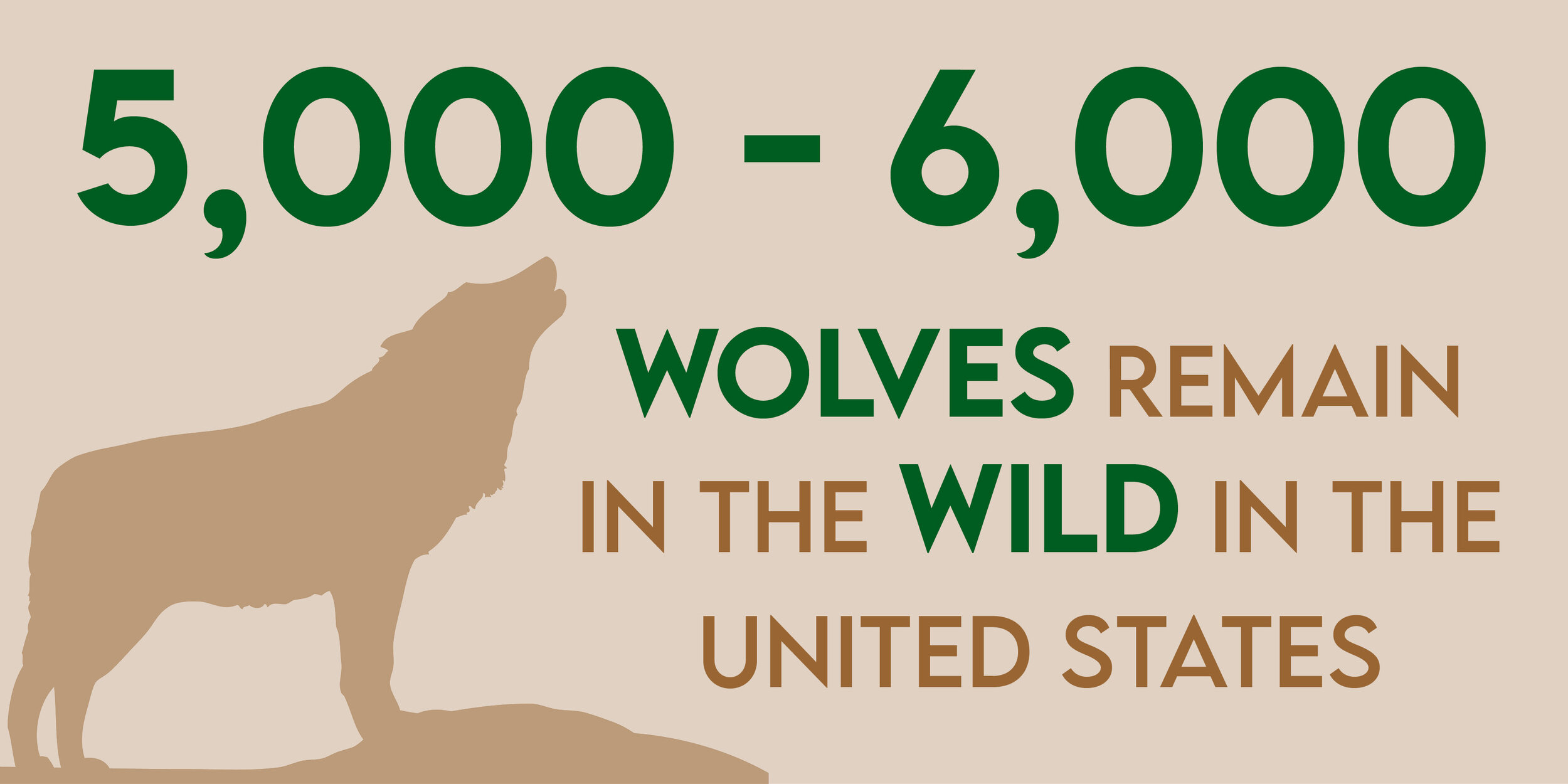Keystone Predator: Wolves
Quick Facts
Between 500-1,000 wolves are killed every year in the U.S., between legal permitted hunting and illegal poaching.
There are only two documented cases of wolves killing people in North America. EVER.
According to USDA data, dogs kill 100% more cattle and 1,294% more sheep than wolves annually.
Also according to USDA data, wolf kills amount to less than 0.01% of all livestock loss, with the primary causes of cattle and sheep losses in the United States resulting from health problems, weather, and theft.
Wolves are highly intelligent, social creatures who form tight bonds with their packmates. They howl to communicate – reinforcing their social bonds, locating one another, sounding an alarm, or warning another pack to stay away from their territory.
The Grey Wolf: An American Keystone Species
In North America, grey wolves once ranged from coast to coast and from Alaska all the way to Mexico. Before human intervention, there were approximately two million roaming freely. In the early 20th century, government-sponsored predator control programs and declines in prey brought gray wolves to near extinction in the lower 48 states. In 1973, when wolves finally received protection under the Endangered Species Act, only a few hundred remained in the U.S. Today, approximately 5,000 wild wolves remain in less than 10% of their original natural habitat, mainly in Montana, Oregon, Washington, Idaho, Wyoming and the Western Great Lakes region.
Wild wolves are keystone species, meaning that other species in their ecosystem largely depend on them and, if they are removed, the ecosystem would change drastically. Studies at Yellowstone National Park have shown the ripple effects of reintroducing wolves into the ecosystem. Wildlife such as ravens, foxes, wolverines, coyotes, bald eagles, and even bears benefit from feeding on the carcasses of animals killed by wolves. To avoid wolf predation, elk changed their behaviors and movements, which allowed willow, aspen, and cottonwood regrowth along rivers and streams. The regrowth provided food for beavers and habitat for birds, literally altering the paths of waterways and helping to return the ecosystem to its former health.
Myths About Wolves and Livestock
Wolves naturally prey on elk, deer, bison and moose and actually prefer to prey on these animals over livestock. According to a Washington State University Study that analyzed 25 years of data, the practice of killing wolves actually leads to an increase in livestock depredation. Younger wolves depend on their pack to provide food and also to teach them how to hunt. When those key members of the wolf pack are killed, the younger, less experienced wolves will learn to rely on easier, slower moving prey like livestock.
We believe a better solution is to protect wolves, their habitats and their natural prey. This in turn will protect livestock from predation and the livelihood of the ranchers who depend on them.


